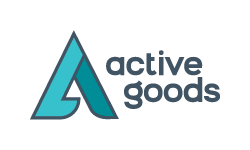Working at a desk eight hours a day can have a detrimental effect on your body. It is one of the surest ways to develop upper and/or lower cross syndrome. These two syndromes, which can occur independently or simultaneously, can be combated through regular trigger point release and stretching interspersed throughout the day.
These techniques apply to any level of physical fitness. If you do spend three to four hours a week in the gym, that is surly an effort to be commended. The ratio however of the workday will always out weigh your gym time. That is why the following four hotspots need to be loosened and stretched during the workday.
Upper body:
1. Trapezius
Your trapezius muscles originate at the base of your skull and insert at the scapulae. Tightness in this muscle group can induce neck pain, headaches and internal rotation of the scapulae causing pain at the origin of your pectorals in some cases. The internal rotation of your scapulae and hunching over a desk result in these muscles sitting in a shortened position throughout the day. Rolling out your traps with a lacrosse ball will induce blood flow to the shortened muscles resulting in temporarily improved elasticity. The best indication that you are hitting the right spot will be a moderate amount of pain. If you do not feel any discomfort or pain, apply more pressure or move on along the muscle. Always follow through by stretching after rolling out by dropping your shoulder as low as it will go, then bringing the opposite ear to its respective shoulder to create as much distance as possible between the origin and insertion of the muscle.
2. Pectorals
Your pectorals is the large muscle group found in your chest. The same concept applies for internal rotation as with the trapezius muscles. The nerves which are pinched and that usually tighten up the most are at the origin of the pectoral, which is found in the border of your armpit. This is where you want to focus your rolling, again, with a lacrosse ball. Now stretch. Find a wall and place your palm against it with your fingers pointing to the respective side you are stretching. Then flatten your forearm and the humerus flat against the wall and turn your body away from the wall. In order to intensify, move your palm up along the wall to isolate different muscle fibres within the pectorals.
3. Iliotibial Band
In order to roll out your IT band, you will need a foam roller. Lying on your side and using your body weight, roll from your hip down to your knee along the side of your femur.This tendon can cause knee pain and degradation of the patella (knee cap). Loosening it will improve mobility and alleviate discomfort in the knee. In order to stretch this tendon, on all fours, put your knees together and while maintaining square shoulders, sway your hips from side to side in line with your knees.
4. Psoas Major
For this muscle group, there is no practical way to achieve trigger point release without a massage therapist or personal trainer. In order to stretch your Psoas Major (hip flexor), get down on one knee and drive your hips forwards while keeping your shoulders above your hips. Whichever knee is on the floor is the side you are stretching. A tight hip flexor will cause an anterior tilt to the pelvis altering your center of gravity and result in lower back pain. Keep it loose!
Source: Iain Bain, https://thebainbuild.wordpress.com/

